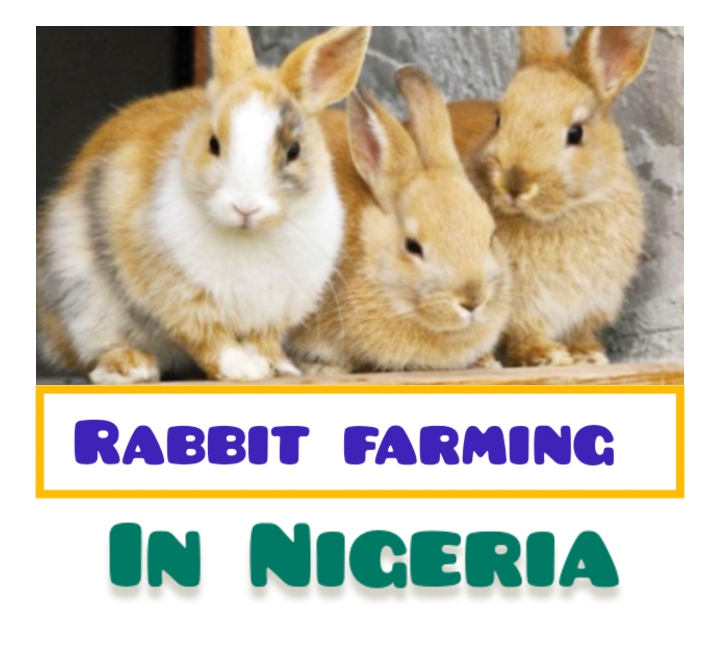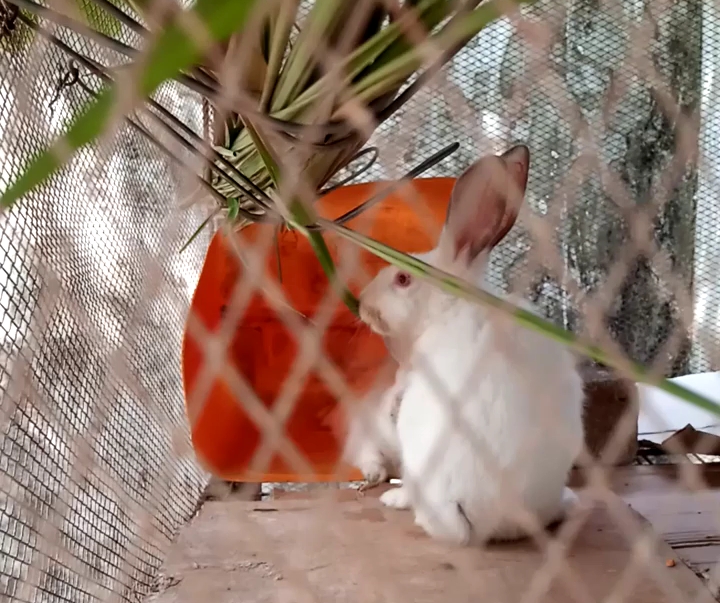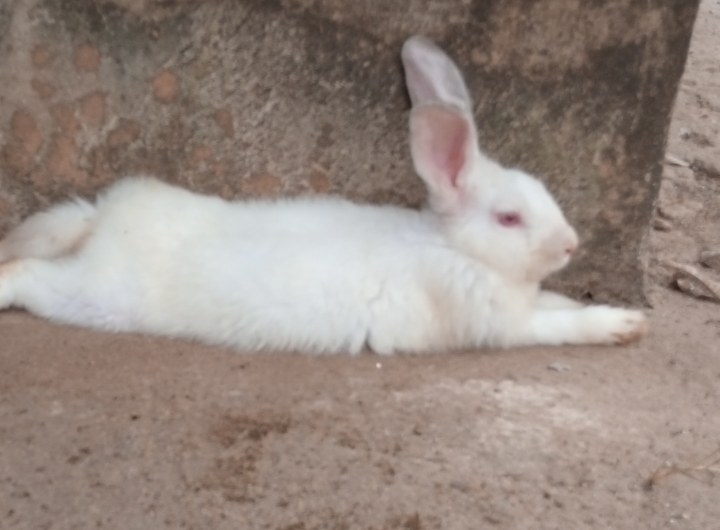How to Start Rabbit Farm in Nigeria/Africa: A Comprehensive Guide
Have you ever considered making money from raising rabbits? It may seem unusual, but rabbit farming is gaining popularity in Nigeria and many African countries. This guide will explain rabbit farming in a straightforward way that’s easy to follow. We’ll look at the advantages, the business possibilities, and how to get started. So let’s get going!

Rabbit farming involves breeding and raising rabbits for different purposes like their meat, fur, or for use in laboratories. In Nigeria and across Africa, more people are becoming interested because rabbits don’t require a lot of space or resources compared to larger farm animals like cows or goats. This makes rabbit farming a viable option for farmers in both rural and urban areas.
One major benefit is how quickly rabbits reproduce. They have short pregnancies and can give birth to many babies at once. This allows farmers to rapidly grow their rabbit population. Rabbits also eat less food than cows or pigs to produce the same amount of meat. This helps keep costs down.
Rabbit meat is also healthy – it’s lean, high in protein, and low in cholesterol. Compared to other livestock, rabbits are environmentally-friendly too, producing less greenhouse gases and using less land and water. Their manure can even be used as fertilizer for crops!
Moreover, rabbit meat is low in fat and cholesterol, a good alternative to red meat. This makes it ideal for individuals looking to maintain a healthy diet. Additionally, rabbit fur and pelts are utilized in various industries, including fashion and crafts, providing additional income streams for farmers.
Business Opportunities in Farming Rabbits
So what kind of business opportunities exist in rabbit farming? To begin with, it doesn’t require a huge amount of startup money or lots of land, making it accessible to farmers with limited funds. And because rabbits multiply so quickly, you can rapidly expand your operation and start making a profit in a shorter time.
The most common rabbit farming business is raising rabbits for their meat. There is demand for rabbit meat from health-conscious consumers looking for lean protein sources. This involves carefully breeding productive meat rabbit breeds and managing their growth cycle until they reach ideal slaughter weight.
Another avenue is fur rabbit farming, where you raise certain breeds specifically for their valuable fur used in fashion, clothing and crafts. While this requires more investment in top-quality breeding stock, it can be very profitable if done right.
When choosing which rabbits to raise on your farm, there are many breeds to consider. For meat production, popular choices include the New Zealand White, Californian and Flemish Giant breeds thanks to their fast growth rates. For fur, angora and rex rabbits are prized for their luxurious, high-quality coats.
With relatively low startup costs needed and the ability to quickly increase production, rabbit farming offers diverse business models to suit different farmer goals and resources – whether your focus is meat, fur or even niche markets like selling manure as fertilizer.
Research and Planning
Before jumping into rabbit farming, it’s absolutely essential to do plenty of upfront research and planning. This lays the critical foundation for a successful business venture.
Identifying the Market for Rabbit Meat
Start by assessing the demand for rabbit meat in your local area and region. Look at any existing rabbit meat suppliers and try to understand what customers want. Having an idea about the current market will allow you to tailor your production plans and marketing strategies effectively.
Choosing the Best Breed of Rabbits
Next, select which specific rabbit breed is best suited for your intended purpose and environment – whether it’s meat production, fur, or a combination. Some of the popular meat breeds were mentioned earlier, but there may also be local rabbit varieties that are well-adapted to your region’s climate.
Check out the breeds of rabbit in Nigeria here.
The cost of starting a rabbit farm
Make sure to carefully calculate all the costs involved in rabbit farming – feed, housing, veterinary care, purchasing breeding stock, and any other necessary equipment or supplies. Having a realistic budget prepared will guide your financial management decisions. Take time to find affordable, reliable local suppliers for necessities like quality feed.
Selecting a Suitable Location for the Farm
The physical location you choose for your rabbit farm is also critically important. You’ll need enough space to construct housings and outdoor enclosures, with access to clean water sources and greenery for the rabbits to forage. Consider factors like proximity to possible markets, transportation routes, and environmental elements like temperature that could impact the rabbits’ wellbeing.
Business Plan
A well-prepared business plan serves as a roadmap for your rabbit farming venture, guiding decision-making and ensuring long-term success.
You need to develop a comprehensive business plan to outline your company overview, market analysis, operations plan, organizational structure and financial projections. A solid, well-thought-out business plan is key for attracting any potential investors and making strategic decisions as you grow.
Outlining Marketing Strategies
Effective marketing strategies are essential for promoting your rabbit farming business and attracting customers. Identify your target market segments and develop tailored marketing strategies to reach them. This may include online and offline advertising, social media marketing, participation in agricultural fairs and exhibitions, and collaborations with local restaurants and retailers. Highlight the unique selling points of your rabbit meat, such as its lean and healthy qualities, to differentiate your products from competitors.
Setting Financial Goals and Projections
Set clear financial goals and projections to guide your business operations and measure performance over time. Determine your startup costs, operational expenses, revenue targets, and profitability milestones. Create detailed financial projections, including income statements, cash flow statements, and balance sheets, to forecast your financial performance for the first few years of operation. Be realistic in your assumptions and factor in potential risks and uncertainties to ensure the viability of your business model.
By preparing a comprehensive business plan, outlining effective marketing strategies, and setting realistic financial goals and projections, you can position your rabbit farming business for success in the competitive agricultural market. Investing time and effort in strategic planning and execution will enable you to maximize profitability, minimize risks, and achieve sustainable growth in the long run.
Setting Up the Farm
With thorough research and planning done, it’s time to actually establish your rabbit farm! Carefully select the optimal location considering the spatial needs, utility access, environmental suitability and ease of transportation.
Choosing the Right Location
First and foremost, carefully select the optimal location for your rabbit farm. Consider factors such as accessibility, proximity to markets, availability of utilities, and suitability of the environment for rabbit rearing. Ensure the chosen location provides ample space for expansion, access to clean water sources, and protection from predators. Conduct thorough research and site visits to identify the ideal location that meets your operational needs and long-term objectives.
Building the Rabbit Housing
Once you’ve secured a suitable location, focus on constructing appropriate housing facilities for your rabbits, construct sturdy well-ventilated rabbit housings using easy-to-clean, pest-resistant materials. Make sure to have separate dedicated areas for breeding does, growing kits, and resting bucks. Invest in proper feeding and watering equipment like automatic feeders to consistently provide proper nutrition.

Proper rabbit management techniques are critical for success too. Take time to understand their behavior and enrichment needs to minimize stress and keep them healthy. Implement an effective breeding program by selecting high-quality, productive stock and nurturing reproductivity. Have a clear plan to periodically manage your overall population size through culling or livestock sales.
Also see the types of rabbit housing here
Above all else, make your rabbits’ health and wellbeing the top priority through preventative care measures like vaccinations, parasite control, strict sanitation protocols and close monitoring of environmental conditions. Healthy, unstressed rabbits will be your most productive assets!
Procuring Equipment and Supplies
Next, procure the necessary equipment and supplies to support your rabbit farming operations. Invest in quality cages or hutches, nesting boxes, feeders, and watering systems that are designed specifically for rabbit rearing. Source high-quality feed, hay, and supplements from reputable suppliers to ensure the health and nutrition of your rabbits. Additionally, stock up on essential veterinary supplies and medications to address any health issues that may arise.
Setting Up a Feeding and Watering System
Implement a reliable feeding and watering system to ensure the proper nutrition and hydration of your rabbits. Install automatic feeders and waterers to provide a consistent supply of food and water throughout the day. Monitor feeding and watering schedules closely to prevent overfeeding or dehydration, which can lead to health problems and decreased productivity. Regularly clean and maintain the feeding and watering equipment to prevent contamination and ensure the hygiene of your rabbit farm.
Rabbit Management
Transitioning from farm setup to day-to-day operations requires a deep understanding of rabbit behavior, effective breeding programs, population management, and ensuring animal health and welfare.
Rabbit management is another important aspect, ensuring the well-being and productivity of your rabbit farm.
Understanding Rabbit Behavior and Needs
Begin by gaining a comprehensive understanding of rabbit behavior and their specific needs. Rabbits are social animals that thrive in environments that mimic their natural habitats. Provide ample space for exercise and exploration, as well as hiding places and enrichment activities to stimulate their mental and physical well-being. Monitor their behavior closely to identify signs of stress, illness, or aggression, and take appropriate measures to address any issues promptly.
Implementing a Breeding Program
To sustainably grow your rabbit farm, implement a strategic breeding program to optimize productivity and genetic diversity. Select breeding stock with desirable traits such as fast growth, high fertility, and good maternal instincts. Develop a breeding schedule and mating strategy to ensure a consistent supply of offspring for meat production or breeding purposes. Monitor breeding pairs closely and intervene as needed to maximize reproductive success and minimize inbreeding.
Managing the Rabbit Population
As your rabbit farm expands, it’s essential to manage the population effectively to prevent overcrowding and maintain optimal productivity. Regularly assess the carrying capacity of your housing facilities and adjust breeding rates accordingly to avoid overpopulation. Implement selective culling or sales programs to manage surplus rabbits and maintain a balanced population size. Consider factors such as market demand, resource availability, and space constraints when making population management decisions.
Ensuring Animal Health and Welfare
The health and welfare of your rabbits should be a top priority in your management practices. Implement a comprehensive health management program that includes regular health checks, vaccinations, parasite control, and disease prevention measures. Provide clean and sanitary living conditions, as well as nutritious feed and fresh water to support optimal growth and immune function. Monitor environmental conditions such as temperature, humidity, and ventilation to prevent heat stress or respiratory problems. Additionally, ensure proper handling and care practices to minimize stress and promote positive interactions between rabbits and caregivers.
Marketing & Selling Rabbits
With your rabbit farm properly established and operational, it’s time to strategize the best ways to market and sell your products! Start by precisely identifying your target customers – whether that’s restaurants, grocery retailers, individuals or a combination.
Then develop a comprehensive marketing strategy that utilizes the most effective channels to cost-efficiently reach those specific customers. In today’s digital age, online marketing is an absolute must. Create a professional website and social media presence to showcase your rabbit farm and products. Utilize search engine optimization (SEO) techniques to improve your visibility in web searches. Make it easy for customers to place orders online. Alternatively you can advertise on e-commerce websites.
But don’t completely neglect traditional offline marketing channels either, like selling at local markets. Offer free samples and tastings to attract new customers. Build positive relationships with potential bulk buyers like chefs and distributors. Consider creative ways to capitalize on all possible product varieties from your rabbits – not just meat, but fur goods, fertilizer from manure, and more!
Clearly establish your rabbit farm’s unique brand identity and selling points. Is it of exceptional quality? An unmatched variety of product offerings? Use promotions, discounts and loyalty programs to incentivize customer retention and positive word-of-mouth referrals.
Overcoming Challenges
Of course, rabbit farming in Nigeria and across Africa presents some unique environmental and cultural challenges that will need to be overcome:

– Protecting your rabbits from potential local predators like snakes through secure enclosures or elevated hutches
– Preventing diseases that are more prevalent in the region through implementing health management protocols
– Addressing potential reproductive issues or low birth rates with strategic breeding practices
– Standing out in already-existing competitive rabbit meat and fur markets through creative brand differentiation
However, with some innovative problem-solving and localized solutions, it’s absolutely possible to overcome these obstacles and operate a thriving, productive rabbit farm!
Frequently asked questions
Is rabbit farming lucrative in Nigeria?
Absolutely! Rabbit farming can be a highly lucrative endeavor in Nigeria, given the low initial investment and operational costs involved. With their rapid reproduction rate, short gestation period, and efficient feed conversion, rabbits can provide a steady source of income through the sale of meat, fur, and even manure. Moreover, the demand for rabbit meat, which is lean and nutritious, is on the rise, presenting a viable market opportunity.
How many rabbits do you need to start a rabbit farm?
The number of rabbits required to kick-start a rabbit farming operation can vary depending on your goals and available resources. However, a common recommendation is to start with at least three to five breeding does (female rabbits) and one or two bucks (male rabbits). This initial stock can quickly multiply, allowing you to scale up your operations as you gain experience and establish a market presence.
What do you feed rabbits in Nigeria?
In Nigeria, rabbits can be fed a variety of locally available feed sources, including fresh greens (such as Tridax procumbens, Centrosema pubescens, and Pueraria phaseoloides), agricultural by-products (like wheat bran, maize offal, and groundnut haulms), and commercial rabbit pellets. It’s essential to provide a balanced diet that meets the rabbits’ nutritional requirements for optimal growth and reproductive performance.
What are the disadvantages of rabbit farming?
While rabbit farming offers numerous advantages, it’s essential to be aware of some potential drawbacks. These may include the risk of disease outbreaks if proper biosecurity measures are not implemented, the potential for cannibalism among rabbits if not managed correctly, and the initial learning curve associated with establishing a successful rabbit farming operation. Additionally, some cultural or religious beliefs may impact the acceptance of rabbit meat in certain communities.
How much is rabbit meat per kg in Nigeria?
The price of rabbit meat per kilogram in Nigeria can vary depending on factors such as location, demand, and the specific market you’re targeting. On average, rabbit meat can range from ₦3,900 to ₦5,700 per kilogram in various parts of the country. However, it’s essential to conduct thorough market research and establish connections with potential buyers to secure the best prices for your products.
Why is rabbit farming not popular in Nigeria?
Despite its numerous benefits, rabbit farming has not gained widespread popularity in Nigeria for several reasons. Firstly, there is a lack of awareness and knowledge about rabbit farming practices among many rural communities. Secondly, some cultural and religious beliefs may discourage the consumption of rabbit meat. Additionally, the absence of robust government support and policies promoting rabbit farming can hinder its adoption on a larger scale.
Is rabbit marketable in Nigeria?
Absolutely! Rabbit meat and fur are marketable products in Nigeria, with a growing demand among health-conscious consumers and those seeking alternative protein sources. Moreover, rabbit manure can be sold as a valuable organic fertilizer for crop cultivation. By establishing relationships with local markets, restaurants, and retailers, rabbit farmers can tap into this burgeoning market and secure a steady stream of income.
Which rabbit breed is best for commercial purposes in Nigeria?
When it comes to commercial rabbit farming in Nigeria, several breeds are well-suited for meat and fur production. The New Zealand White, Californian, and Chinchilla breeds are popular choices due to their fast growth rate, excellent feed conversion efficiency, and high-quality meat and fur. Additionally, local breeds like the Ghanaian Rabbit and the Nigerian Indigenous Rabbit can also be considered for their adaptability to local climatic conditions.
Where can I sell my rabbit urine and poo?
While rabbit meat and fur are the primary products in rabbit farming, the urine and manure can also be valuable resources. Rabbit manure can be sold to crop farmers as a nutrient-rich organic fertilizer, while rabbit urine can be utilized as a natural pesticide or foliar spray for plants. Building relationships with local gardeners, nurseries, and agricultural cooperatives can provide viable markets for these by-products.
What food does a rabbit eat?
Rabbits are herbivores and primarily consume a diet consisting of hay, fresh greens, and a balanced pellet or grain mixture. Hay, such as timothy or grass hay, should make up the bulk of their diet, providing essential fiber for proper digestion. Fresh greens like lettuce, kale, and carrots can be offered as a supplement, along with a high-quality rabbit pellet or grain mix to ensure they receive the necessary nutrients for growth and reproduction.
What breed of rabbit sells the most?
When it comes to commercial rabbit farming, the New Zealand White and Californian breeds are among the most popular and widely sold breeds globally. These breeds are known for their excellent meat and fur production, fast growth rates, and efficient feed conversion. However, in Nigeria, local breeds like the Ghanaian Rabbit and the Nigerian Indigenous Rabbit are also gaining popularity due to their adaptability to the local climate and potential for commercial production.
How often do rabbits have babies?
Rabbits have an incredibly fast reproduction rate, which makes them an attractive choice for commercial farming. On average, a healthy female rabbit (doe) can give birth to a litter of 6 to 12 kits (baby rabbits) every 30 to 35 days. This rapid reproduction cycle allows rabbit farmers to quickly increase their stock and generate a steady income from the sale of meat, fur, and breeding stock.
Conclusion
There you have it – an overview of what it takes to successfully start and operate your own rewarding rabbit farming business venture in Nigeria or elsewhere across Africa. While it certainly requires diligent planning and hands-on management, the relatively low entry barriers and multiple potential revenue streams make rabbit farming an attractive agricultural business opportunity.
By conducting thorough research, setting up proper facilities and implementing sound husbandry practices, you can navigate the challenges and maximize your rabbits’ rapid reproductive potential. Effective branding, creative product varieties and multi-channel marketing are key to successfully selling your products.
So why not seize this opportunity and hop into the world of rabbit farming? With commitment, an entrepreneurial spirit and hard work, you can turn this niche into a profitable, sustainable enterprise. The potential for success is there – you just have to get started!






